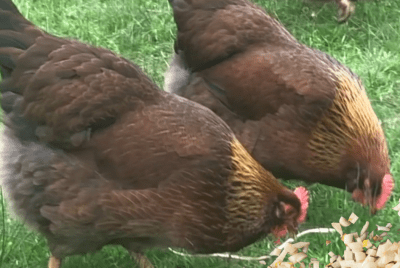Can Rotating Feeders Outsmart Hungry Predators?
Outsmart Predators Rotate Feeders
Over the years, many bird enthusiasts have found themselves facing a common problem: how to protect their feathered friends from predators.
Outsmart Predators Rotate Feeders, some believe that this may be the key to outwitting these lurking threats. The strategy involves moving bird feeders to different spots in the yard every few weeks, preventing predators from learning the patterns and locations of the feeders. This simple but effective technique could be the answer to keeping birds safe and happy while enjoying their daily meals.

Key Takeaways:
- Diversifying feeding locations: Rotating feeder locations can help in outsmarting predators by making it difficult for them to predict and target the feeders.
- Preventing habituation: Changing feeder locations frequently helps in preventing predators from getting accustomed to the feeding patterns and locations.
- Enhancing safety for wildlife: By changing feeder locations, wildlife can avoid predators and reduce the risk of being targeted.
- Encouraging natural foraging behavior: Rotating feeders can encourage wildlife to exhibit natural foraging behaviors, mimicking their natural habitat.
- Promoting biodiversity: By alternating feeding locations, different species of wildlife have an equal chance to access the feeders, promoting biodiversity in the area.
The Art of Rotating Feeder Locations
Benefits of Changing Feeder Spots
One of the key benefits of changing feeder spots is that it keeps predators guessing. By rotating the locations of your bird feeders, you make it harder for predators like squirrels, raccoons, and even neighborhood cats to predict where the next meal will be. This can help protect the birds that visit your feeders and keep the ecosystem in balance.
How Often Should You Rotate?
Locations
Feeder placements should be rotated regularly to maintain the element of surprise for predators and to preserve the safety of the birds. Depending on the level of predator activity in your area, consider rotating feeder locations every few weeks or monthly. This frequency can help prevent predators from becoming too familiar with the feeding patterns and increase the chances of bird survival.
The Strategies Predators Use
Learning and Adaptation Techniques of Predators
For predators, learning and adapting are key strategies in successfully capturing their prey. They observe the movements and behaviors of their prey, adapting their hunting techniques accordingly. Some predators also learn from past experiences, honing their skills for future hunts. This ability to learn and adapt makes predators formidable in their pursuit.
How Predators Track Their Prey
Predators employ a variety of techniques to track their prey. From acute sense of smell to keen eyesight, predators rely on their specialized senses to locate potential targets. They also pay attention to subtle cues in the environment, such as fresh tracks or sounds of movement. With their exceptional hunting skills, predators are able to track down prey with remarkable efficiency.

Implementing Rotation in Practice
Tips for Effective Feeder Rotation
After deciding to implement a feeder rotation strategy in your garden, it’s crucial to follow some key tips for effective implementation. Firstly, make sure to rotate the feeder locations regularly, ideally every few days, to keep predators guessing. Secondly, use a variety of feeder types and placements to confuse potential threats. Lastly, be observant and make adjustments based on the behavior of predators.
- Rotate feeders frequently
- Use a mix of feeder types and locations
- Stay vigilant and adjust as needed
Perceiving the patterns of predators and adapting your rotation strategy accordingly is key to outsmarting them in the long run.
Common Mistakes to Avoid
The implementation of feeder rotation can be challenging if certain common mistakes are made. The biggest error to avoid is sticking to a predictable schedule, as predators can easily learn your patterns. Another mistake is using feeders that are not secure enough, making it easier for predators to access the food. Additionally, neglecting to observe the behavior of predators and make adjustments can render your rotation strategy ineffective.
The effective implementation of feeder rotation involves staying one step ahead of predators by being unpredictable in your actions and continuously assessing and adapting your strategy based on their behavior.
Gathering Evidence
Rotating feeder locations may hold the key to outsmarting predators. By moving bird feeders around, we can potentially confuse and deter squirrels and other unwelcome guests from raiding our bird feeders.

Anecdotal Success Stories
Success: Many bird enthusiasts have reported success in deterring squirrels and predators by simply changing the location of their feeders. By keeping the predators on their toes and disrupting their feeding patterns, they have seen a significant decrease in unwanted visitors.
What Does The Research Say?
One: The research on rotating feeder locations is still ongoing, but initial studies suggest that this method can be effective in deterring predators. The ability to keep predators guessing and prevent them from establishing feeding routines can help protect our feathered friends from harm.
To wrap up on Outsmart Predators Rotate Feeders
From above, it is clear that rotating feeder locations can be a key strategy in outsmarting predators. By constantly changing where feeders are placed, birds can stay one step ahead of their would-be predators and ensure their safety while still enjoying backyard feeding. This simple but effective technique can help create a safer environment for birds to thrive and enjoy the benefits of supplemental feeding. So, next time you fill up your bird feeders, remember to keep things interesting by mixing up their location – your feathered friends will thank you for it!
FAQ’s about Outsmart Predators Rotate Feeders
Q: What is the secret to outsmarting predators?
A: One effective strategy is rotating feeder locations regularly to keep predators guessing. This prevents them from learning your feeding patterns.
Q: How often should I rotate feeder locations?
A: It is recommended to rotate feeder locations at least once a week to throw off predators and reduce the risk of them targeting your feeders.
 Q: What are the benefits of rotating feeder locations?
Q: What are the benefits of rotating feeder locations?
A: Rotating feeder locations helps to deter predators, protects the birds that visit your feeders, and creates a safer feeding environment for wildlife.
Q: How can I effectively rotate feeder locations?
A: You can rotate feeder locations by moving them to different spots in your yard, changing the height at which they are hung, and varying the surrounding vegetation to make it harder for predators to ambush the birds.
Q: Are there any other strategies to outsmart predators at bird feeders?
A: In addition to rotating feeder locations, you can also use baffles and predator guards, avoid placing feeders near hiding spots for predators, and clean up spilled seed to reduce the attractiveness of your feeders to predators.
Chicken Tractors For Your Flock
Protect Your Flock from Aerial Predators
Chamomile Keeps Laying Hens Calm
Rosemary the Pest Repellent Of Grandeur
How to Mix Homemade chicken Feed to Get more eggs.








 Q: What are the benefits of rotating feeder locations?
Q: What are the benefits of rotating feeder locations?



